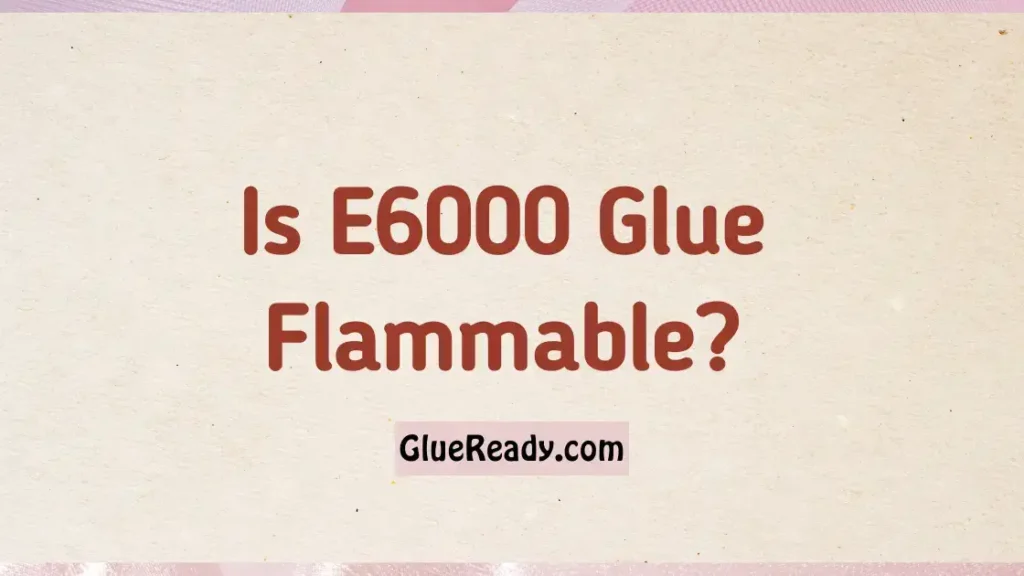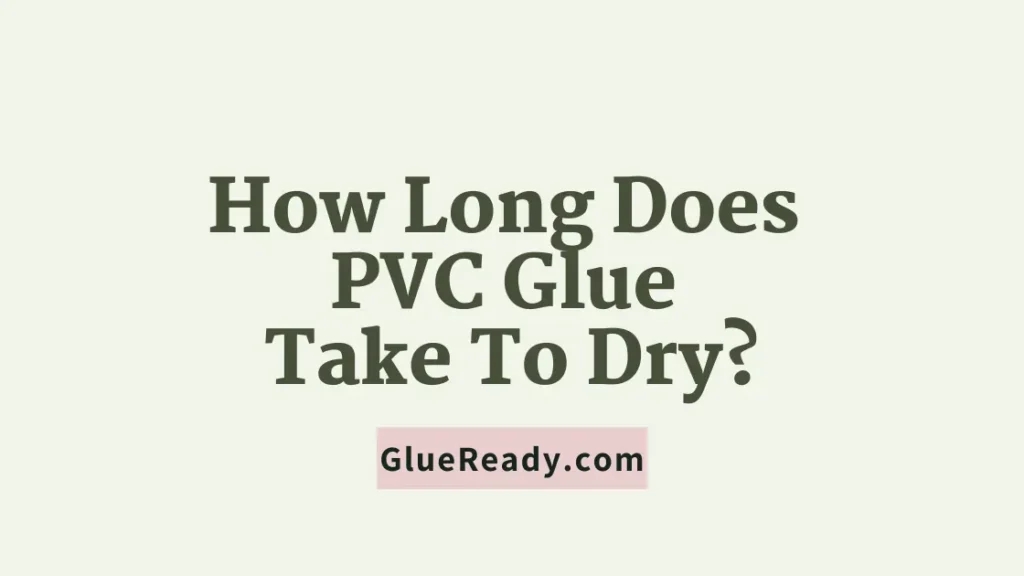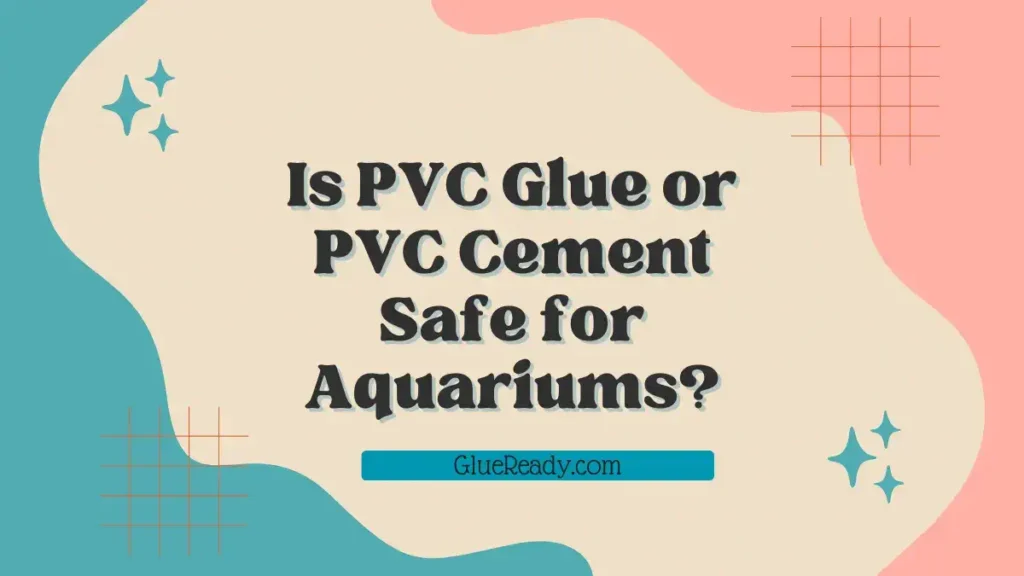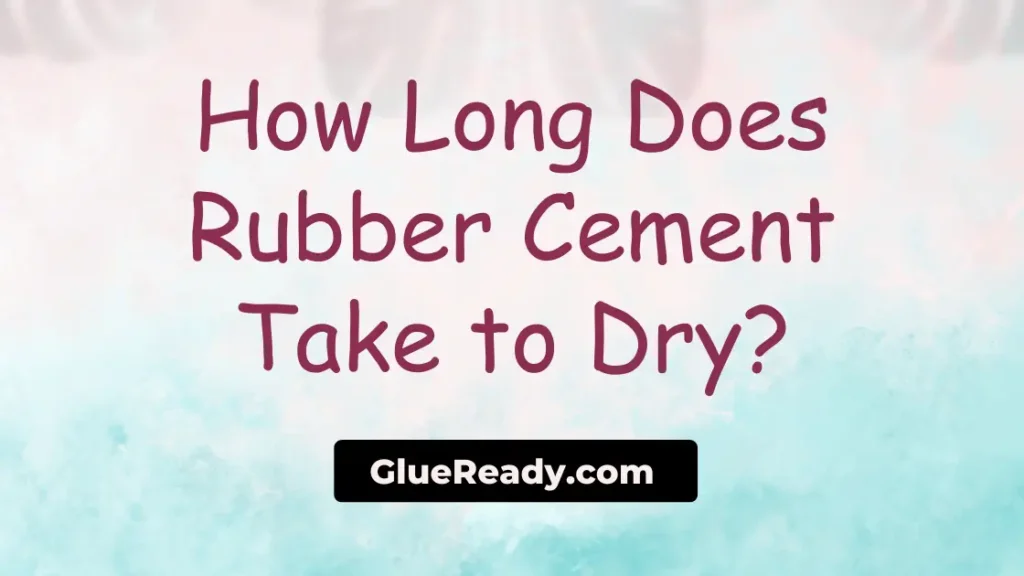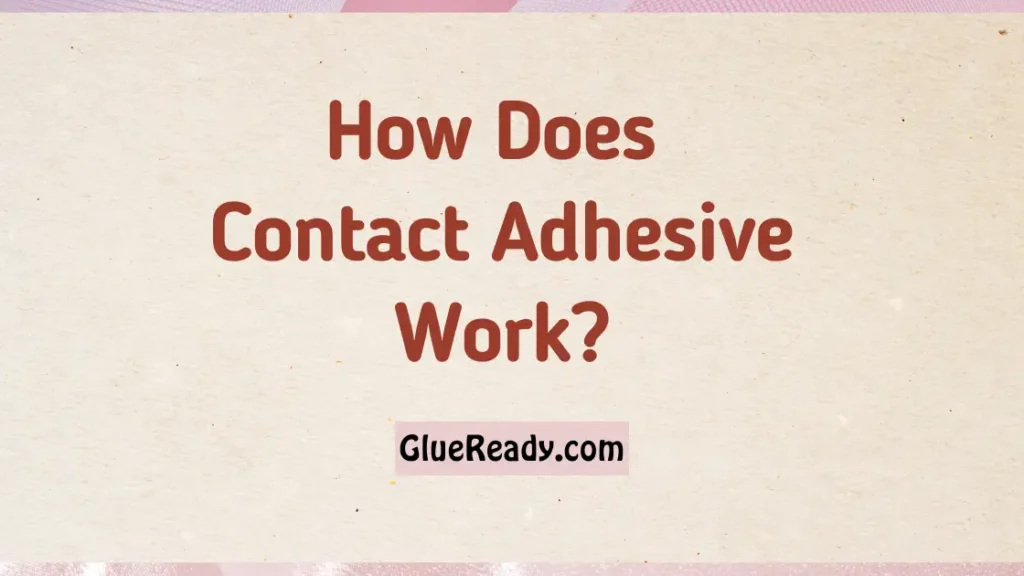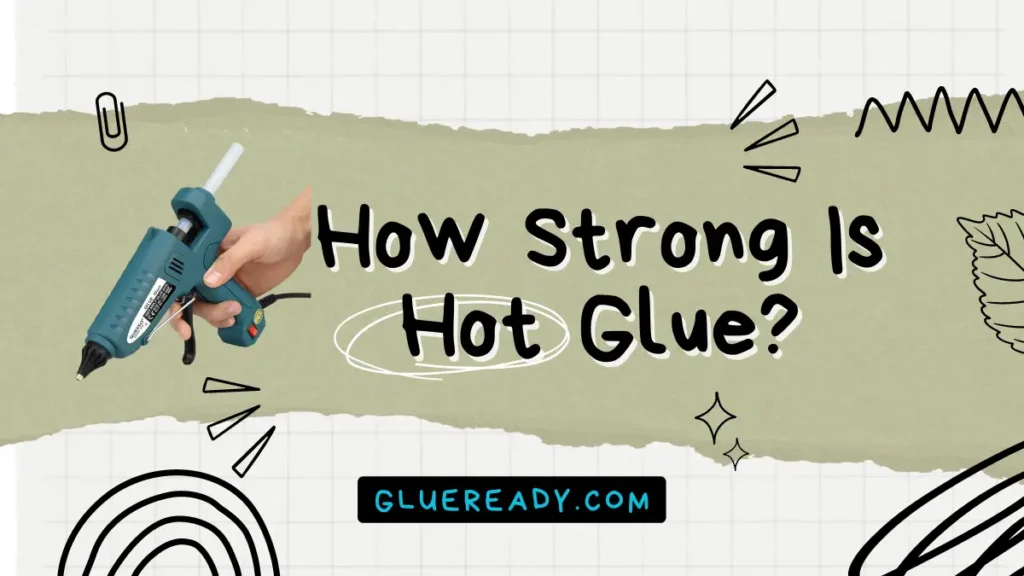How Long Does Contact Cement Take to Dry?

Contact cement is a fast and effective way to bond various materials, but it requires careful application and drying.
It is commonly used for attaching laminates, veneers, metals, plastics, and other materials.
Contact cement works by creating a strong bond when two coated surfaces are pressed together.
Unlike other types of glue, contact cement does not need clamps or pressure to hold the pieces together.
However, it also does not allow any adjustments or corrections once the bond is made.
Therefore, it is important to know how long contact cement takes to dry and how to apply contact cement correctly.
Read More: How To Use Contact Cement?
How Long Does Contact Cement Take to Dry?
Contact cement typically takes around 15 to 20 minutes to dry to the point where you can join the surfaces together.
However, it’s important to note that this initial drying time can vary based on factors such as temperature, humidity, the type and thickness of materials being bonded, and the specific brand of contact cement you’re using.
While you may be able to handle the bonded surfaces after the initial drying time, it’s recommended to wait a full 24 hours for the contact cement to achieve its maximum strength and complete curing.
This extended curing time ensures a strong and durable bond between the materials.
Always follow the manufacturer’s instructions on the specific contact cement product you’re using, as they may provide more accurate drying and curing times based on their formulation.
Factors Affecting the Drying Time of Contact Cement
The drying time of contact cement depends on several factors, such as:
Temperature
Contact cement dries faster in warmer temperatures and slower in colder temperatures.
The ideal temperature range for applying contact cement is between 65°F and 95°F.
If the temperature is too low, the adhesive may not cure properly, and the bond may fail.
If the temperature is too high, the adhesive may dry too quickly and lose its tackiness.
Humidity
Contact cement dries faster in low humidity and slower in high humidity.
The ideal humidity range for applying contact cement is between 40% and 70%.
If the humidity is too low, the adhesive may become brittle and crack.
If the humidity is too high, the adhesive may not evaporate enough solvent and remain sticky.
Viscosity
Contact cement dries faster when it has a lower viscosity and slower when it has a higher viscosity.
Viscosity is the measure of an adhesive’s thickness. The ideal viscosity for contact cement is between 4500 and 6500 centipoises.
If the viscosity is too low, the adhesive may run or drip. If the viscosity is too high, the adhesive may not spread evenly or adhere well.
Solids Percentage
Contact cement dries faster when it has a higher solids percentage and slower when it has a lower solids percentage.
Solids percentage is the measure of how much solid material is in an adhesive compared to how much solvent or water is in it.
The ideal solids percentage for contact cement is between 55% and 65%.
If the solids percentage is too low, the adhesive may not have enough strength or durability.
If the solids percentage is too high, the adhesive may not have enough flexibility or workability.
How to Apply Contact Cement Correctly?
To apply contact cement correctly, follow these steps:
Prepare the Surfaces
The surfaces that you want to bond should be clean, dry, smooth, and free of dust, dirt, oil, grease, wax, or any other contaminants that may interfere with the adhesion.
You can use sandpaper, steel wool, or a scraper to remove any rough spots or irregularities on the surfaces.
You can also use a solvent or a cleaner to wipe off any residue or stains on the surfaces.
Apply the Adhesive
Use a brush, roller, spray gun, or applicator bottle to apply a thin and even coat of contact cement on both surfaces that you want to bond.
Make sure that you cover the entire area of each surface with the adhesive.
Avoid applying too much or too little adhesive, as this may affect the quality of the bond.

Let the Adhesive Dry
After applying the adhesive on both surfaces, let them dry for about 15 minutes or until they are dry to the touch.
Do not touch or disturb the coated surfaces during this time, as this may ruin the adhesion.
You can use a fan or a blower to speed up the drying process if needed.
Join the Surfaces
Once both surfaces are dry to the touch, carefully align them and press them together firmly.
You can use a roller or a pinch roller to apply pressure from the center to the edges of the bonded surfaces.
You can also use a hammer or a mallet to tap lightly on the edges of the bonded surfaces.
Do not slide or reposition the surfaces once they are joined, as this may weaken or break the bond.
Let the Bond Cure
After joining the surfaces, let them cure for at least 24 hours before using them.
The bond will reach its maximum strength after 7 days of curing.
During this time, avoid exposing the bond to moisture, heat, cold, or stress, as this may affect the quality of the bond.
Read More: Top 5 Best Contact Cement
Frequently Asked Questions (FAQs)
How Can I Make Contact Cement Dry Faster?
There are a few ways to make contact cement dry faster.
One way is to use a drying heat tunnel immediately after applying adhesive to all panels.
This will decrease the drying time and increase productivity. Another way is to apply the adhesive by the hot spray method.
How Do You Know When Contact Cement Is Ready?
You can tell when contact cement is ready by pressing a finger to the surface and pulling away cleanly and with no sign of “legginess”.
Don’t hesitate to take a few extra minutes if you are unsure. If there has been any puddling, make sure the puddles are dry.
Final Thoughts
The drying time of contact cement is influenced by various factors such as temperature, humidity, material type, adhesive thickness, and brand formulation.
While contact cement becomes dry to the touch in around 15 to 20 minutes, waiting 24 hours for full curing ensures a strong and durable bond.
By understanding these dynamics and following best practices, you can achieve successful and reliable results in your projects using contact cement.

